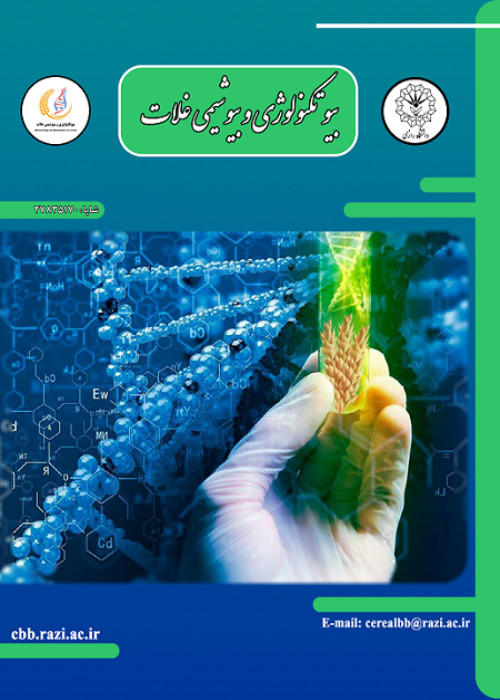Evaluating the expression of osHTAS and HSP70 genes in local cultivars and promising heat-tolerant lines of rice in Khuzestan
Heat and its effects are considered one of the serious threats and damages to the production of agricultural and horticultural crops in many regions of the world. Therefore, it has led to pervasive changes in terms of morphological, physiological, anatomical, and molecular, which causes a sharp decrease in the economic performance of agricultural products. Nowadays, in order to reduce these inhibitory effects, in addition to classical and conventional breeding methods, modern and molecular methods can be used to identify heat-tolerant genes and use them in breeding programs to improve plant tolerance to environmental stresses.
The selection for heat tolerance among four local cultivars Hovyzeh, Hamar, Red-Anbori, Champa and three promising heat tolerant lines V1, V2 and V3 obtained from the international breeding programs of Khuzestan Agricultural Research and Training Center and Natural Resources were evaluated by osHATS and HSP70 genes qPCR on two experimental cultivation dates: May 20 (unfavorable) and June 20 (favorable) 2022 in Ahvaz.
The results obtained from the analysis of gene expression by qPCR on the date of the first cultivation confirmed the presence of the osHTAS gene in rice varieties and lines so that the local variety Champa, Hovyzeh, and line V2 has a high relative gene expression compared to other varieties and lines studied and they were significantly different from each other. The analysis of the osHTAS gene expression on the second planting date (June) in Ahvaz also shows the presence of the high-temperature tolerance gene in Hovyzeh, Hamar and V2 lines; therefore, the mentioned varieties could be used as parental lines for transfer heat tolerance gene to be used in multi-breeding programs and terms of the relative expression level of the gene, they showed a statistically significant difference with each other. The results of the relative gene expression of the HSP70 gene in the cultivation date of May showed that the local cultivars Champa, Red-Anbori and Hovyzeh had a remarkable superiority over the others. Examining the HSP70 gene expression pattern of rice cultivars and lines on the second planting date also revealed that the local cultivars Red-Anbori, Champa, Hovyzeh, and Hamar showed superiority. The tolerance of local cultivars to heat stress is due to their rapid growth and the creation of a large green cover in the early stages of growth, and their great adaptation to the region's environmental conditions.
Local cultivars can withstand heat stress well with rapid growth and creating much vegetation due to their high adaptability to environmental conditions and the presence of heat stress tolerance genes. They could be used as parental lines in breeding programs.
- حق عضویت دریافتی صرف حمایت از نشریات عضو و نگهداری، تکمیل و توسعه مگیران میشود.
- پرداخت حق اشتراک و دانلود مقالات اجازه بازنشر آن در سایر رسانههای چاپی و دیجیتال را به کاربر نمیدهد.


